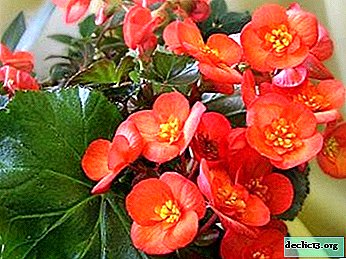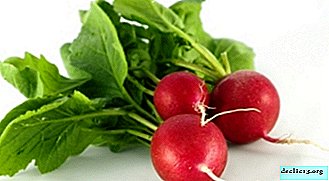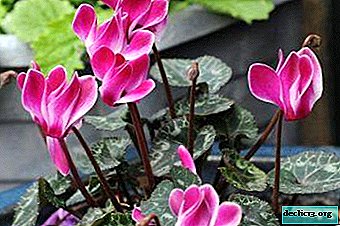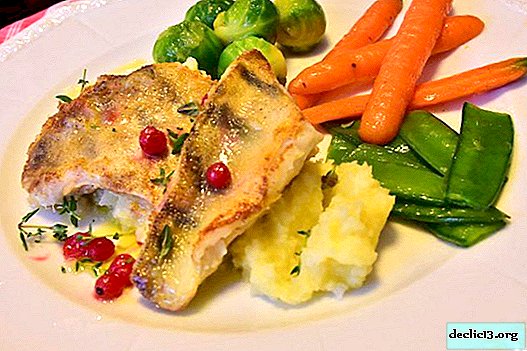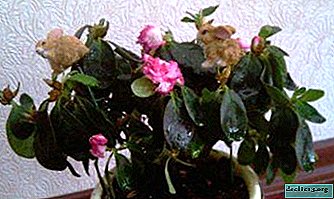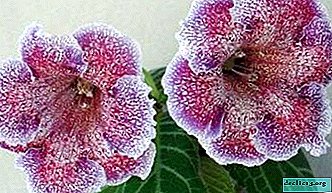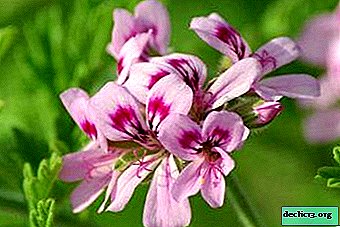The most important thing about flowering succulent cotyledon: species, features of reproduction and care
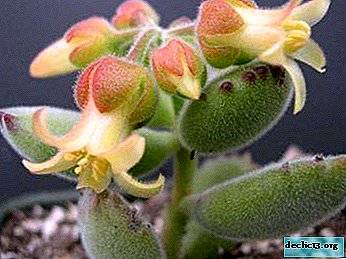
Cotyledon is a plant that rightfully deserves an honorable place in the collections of flower growers, due to its unpretentiousness. It is able to decorate the interior for a long time, without requiring in-depth knowledge of care.
For good growth, it is enough to observe basic conditions: light, watering, temperature, soil, fertilizer. In addition, you need to know what difficulties you may encounter: diseases, pests.
We will talk about this further. And also, we will talk about the varieties of this exot.
Detailed description
What is this plant and where is its homeland?
Cotyledon is a perennial herbaceous succulent of the Tolstyankov family native to Africa. In the natural environment, the plant is distributed from Ethiopia to South Africa. botanical description The shape of this succulent can be rosette or bushy. The fleshy leaves of a round, oval, rhombic or lanceolate shape are diverse in their color. From light green and light gray to gray and even reddish.
The leaf can be either monophonic or colorful. On its surface it always has pubescence or a dense white coating. Some species have a wavy edge.
The leaves are arranged in pairs along the fleshy branched stems and are attached to them by very short petioles, or without petioles at all. The color of the stems varies in the same color scheme as the foliage. As the stem grows, it stiffens. A brown bark forms. The plant reaches a height of 30-70 cm. The annual growth is small. Succulent has a fibrous superficial root system.
The flowering period of cotyledon is from March to August. On high peduncles, small tubular flowers with curved edges are collected in paniculate inflorescences. Buds in the form of drooping bells with dense glossy petals. The colors are bright and varied. From yellow to purple.
On a note. Due to its rich external variety, cotyledons are able to solve almost any task of decorating space. You can use both individual plants and compositions from several varieties.Varieties: description and photo
The following types are considered the most popular.
Felt
Upright compact bush up to 15 cm high. Shoots with many fleshy ovoid leaflets. The stems and leaves are covered with short white villi. In everyday life, this species is called a bear paw because of the reddish notches protruding along the edge of the sheet, resembling animal claws. Blooms in red small flowers. Paniculate inflorescence, towering above the bush.

Wavy (Undulata)
Branched small shrub up to 80 cm high. Leaves give the plant a special appeal. Rhomboid with a wavy edge. The surface of the sheet plate is covered with a whitish waxy coating. A low peduncle with white stripes is crowned with an umbrella inflorescence. Stripes are also visible on yellow or orange colors.

Tree-like
A miniature tree with a height of not more than 1.2 m, formed by numerous "branches". The leaves are rounded and wide. Depending on the variety, their color may be gray-green or yellowish-green. In the people, this plant is usually called a money tree. According to legend, it is able to bring prosperity to the house.

Lewisia Eliza (lewisia cotyledon)
The plant is a densely leafy bush, the length of individual leaves can reach 15 cm. The outer edge is slightly wavy and bordered with red. Levy's leaf rosettes densely cover the surface of the soil. Bright pink buds with many petals are located on fleshy peduncles in the central part of leaf rosettes.

Rounded
Spreading bushes up to 90 cm high. The stems are covered with leaves of an interesting shape, most resembling flattened tubes. The leaves are gray-green with a bright red rim around the edges. An umbrella inflorescence with bright buds is formed on a peduncle 30 cm long.

Saxifrage
The plant is semi-shrub. Low with flattened leaves of a lanceolate form, forming dense basal rosettes. The leaves are pointed and covered with thick pile. Flowering period is June. Small white buds form paniculate inflorescences located on a long peduncle.

Colloidal
A small shrub formed by stalks branched from the ground. Due to the fact that the stems are slightly curved and covered with reddish foliage, the plant from afar resembles tongues of flame. Paniculate inflorescences, on peduncles 30 cm high, are formed from red or orange flowers.

Care Features
Lighting
Lighting cotyledon needs a bright and long. Only under this condition will the plant delight the eye with flowering. With a lack of lighting, the shoots become thinner and fade, and the leaves become smaller, yellow and fall.
Seat selection
The best solution would be to put cotyledon on a sunny window. In summer, the plant gratefully accepts outdoor takeaway. The stems will strengthen, and the color of the leaves will improve.
Temperature
In the spring-summer period, the temperature regime for cotyledon can not be controlled. The plant tolerates heat and small temperature differences. In winter, cotyledon, like all succulent plants, needs peace. At this time, it is desirable to place it in a bright, cool room, where a temperature of 10-15 degrees of heat is maintained.
Air humidity
Cotyledon fabrics are provided with a supply of their own moisture, so the humidity level in the room does not matter much to him. Dry air is natural for cotyledon in the natural environment, therefore, artificially increasing the humidity in the room or spraying the plant itself is not necessary.
Important! It is not recommended to touch the leaves with your hands, since you can damage the plaque, which protects the plant from excessive evaporation of moisture.Watering
The season affects the need for watering cotyledon. In the winter dormant period, which lasts from November to January, you do not need to water the plant. In February and March, the required frequency of watering is 1-2 times a month, and from April to September 1 time per week. It is necessary to ensure that the soil has time to dry to the very bottom of the pot.
Soil preparation
 To obtain an acceptable soil for planting cotyledon, you can purchase a ready-made soil mixture for cacti and succulents with a small addition of sand or prepare the soil on your own. For independent cooking you will need:
To obtain an acceptable soil for planting cotyledon, you can purchase a ready-made soil mixture for cacti and succulents with a small addition of sand or prepare the soil on your own. For independent cooking you will need:
- clay soil mixture - 1 part;
- coarse sand - 0.5 parts;
- fine gravel - 0.5 parts;
- turf land - 1 part;
- sheet land - 1 part;
- peat - 1 part;
- sand - 0.5 parts.
The soil should not be heavy.
Pruning
For cotyledon, there is no need for regular pruning. It is enough to observe the norms of illumination so that the plant retains its highly decorative appearance for a long time. You can prune or pinch if you need the formation of small trees. For a plant, this procedure is painless.
Note! After flowering, it is not recommended to prune wilted peduncles.For a while, you have to come to terms with their unaesthetic for the good of the general health of the plant. After the peduncles are completely wilted, they must be gently nipped off.
Fertilizer
Given the natural habitat of cotyledon, with its poverty of soils, top dressing for it is not a mandatory procedure. This succulent is quite adapted to a constant lack of nutrients and perceives feeding as an additional bonus for better growth and splendor of flowering. The plant spends the fertilizer received economically, therefore it is enough in the spring and summer to make a ready-made composition for succulents once a month. Since September, feeding should be stopped.
Diseases and pests, as well as ways to combat them
Cotyledon is very resistant to pest attacks. The most susceptible to the defeat mealybug. Pest can be removed manually using a wet cloth soaked in alcohol or treated with insecticides. Also, the use of insecticides is recommended if the plant is affected by a spider mite, scutellaria or aphid.
 If the plant is taken out to the garden during summer keeping, there is a risk of snail damage. The container with cotyledon should be protected from contact with garden soil and other plants. Rot on the leaves is the result of water falling on them. Shriveled brown leaves are the result of prolonged drying of the roots with insufficient watering. Due to lack of light, the plant can stretch out a lot.
If the plant is taken out to the garden during summer keeping, there is a risk of snail damage. The container with cotyledon should be protected from contact with garden soil and other plants. Rot on the leaves is the result of water falling on them. Shriveled brown leaves are the result of prolonged drying of the roots with insufficient watering. Due to lack of light, the plant can stretch out a lot.
Slow growth is usually due to lack of nutrition. When the lower leaves of the plant change their color to yellow and fall off, there is no reason for concern. This is a natural plant aging process. Due to constant overflow, root rot may occur.
On a note. Only a transplant can save the plant, during which it is necessary to remove the damaged parts, rinse the roots and treat them with a weak solution of potassium permanganate. The same method will help in case of damage to the plant by the root worm.How to transplant succulent?
Transplant cotyledon should be necessary. When the rhizome has grown greatly and it is already crowded in the occupied capacity. An annual transplant of young plants is required only if the rosette of leaves becomes wider than the diameter of the pot. Adult cotyledons usually require a transplant once every 2-3 years. Transplanted cotyledon in March. After watering, when the earth becomes damp.
Take out an earthen lump and transfer to a new container. Pots should be used shallow and wide with drainage holes. In a new tank, the bottom is covered with a layer of expanded clay or other drainage material, and nutrient soil for succulents is laid on top.
Cotyledon is poisonous. Any activities related to transplanting and caring for the plant are best done with gloves on. Children and pets should not have access to the plant.
Breeding
For cotyledon, reproduction is equally good, both vegetatively and by seed. When choosing a seed method, it is optimal to adhere to the following recommendations:
- Prepare light soil. A mixture of sheet soil and sand or ready-made soil for succulents.
- To begin with, cotyledon seeds are planted in a flat box or even a pallet, but with the obligatory presence of drainage holes.
- The greenhouse needs daily ventilation and, as necessary, spraying from a fine spray.
 Shoots will appear in 1-3 weeks. The grown plants are transplanted into separate small containers. The substrate is used the same as for adult plants.
Shoots will appear in 1-3 weeks. The grown plants are transplanted into separate small containers. The substrate is used the same as for adult plants.- Subsequent watering of young plants is carried out sparingly to avoid the formation of root rot.
A vegetative method of propagation is the easiest to get a new plant:
- Initially, it is necessary to cut the cuttings from the apical shoots with a length of 8-10 cm. The procedure is recommended to be carried out in spring or early summer.
- Dry the blanks during the day in air. The cut site must be treated with heteroauxin or crushed charcoal.
- The next day, root in a sand-peat substrate under polyethylene, periodically ventilating. Moisten the earth immediately after landing. The temperature regime is 20-22 degrees. To root the soil from time to time to spray.
- Transplant rooted cuttings into separate pots, creating a bright diffused light.
According to the same scheme, it is possible to produce reproduction in a separate sheet. Cotyledon is a plant with a unique decorative look. If you give the flower proper care and care, it will become a truly stylish accent in the organization of any space.

 Shoots will appear in 1-3 weeks. The grown plants are transplanted into separate small containers. The substrate is used the same as for adult plants.
Shoots will appear in 1-3 weeks. The grown plants are transplanted into separate small containers. The substrate is used the same as for adult plants.
